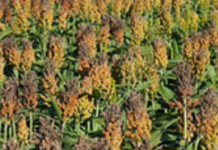From the Office of Public Affairs | http://www.news.ku.edu
Headlines
World’s oldest guide to brewing sake receives first English translation
LAWRENCE — A University of Kansas history professor’s new article, “Sake Journal (Goshu no nikki): Japan’s Oldest Guide to Brewing,” provides the first English translation of the earliest Japanese manual for brewing sake. It appears in the winter issue of Gastronomica: The Journal for Food Studies.
New online homeland security graduate programs equip students with specialized industry knowledge
OVERLAND PARK — The University of Kansas is wrapping up the first semester of the new online Master of Science in Homeland Security: Law & Policy degree and an online Graduate Certificate in Homeland Security: Law & Policy. The new program director, Paul Cope, joined KU in October. He previously served as chief of cyber law and policy with the Kansas National Guard and is a judge advocate with the Kansas Army National Guard.
Full stories below.
————————————————————————
Contact: Jon Niccum, KU News Service, 785-864-7633, [email protected]
World’s oldest guide to brewing sake receives first English translation
LAWRENCE — In Japan, the proverb “sake wa honshin o arawasu” translates to “sake reveals the true heart.”
But that’s one of the few things translated when it comes to the country’s signature alcoholic beverage.
“Surprisingly, despite the growing interest in sake in the U.S., there’s hardly any research about the history of sake in English,” said Eric Rath, professor of history at the University of Kansas.
“So in my translation and in a book that I’m writing, I want to give readers an understanding of sake’s evolution and cultural significance.”
His new article, “Sake Journal (Goshu no nikki): Japan’s Oldest Guide to Brewing,” provides the first English translation of the earliest Japanese manual for brewing sake. It appears in the winter issue of Gastronomica: The Journal for Food Studies.
“Sake is sometimes translated as ‘rice wine,’ and that’s a mistake since it’s made more like beer than wine,” he said.
That’s not the only thing Westerners tend to misunderstand about the fermented drink.
Rath said, “Sake also has a higher alcohol content than wine. Unlike most other alcoholic beverages, sake can be enjoyed at a variety of temperatures. Cooling or heating the same sake yields remarkable changes in the taste. And sake goes well with a lot more than just Asian food. It’s meant to be savored, not thrown into beer to make a ‘sake bomb.’”
The original “Goshu no nikki” was a secret manuscript that was strictly safeguarded, its information kept primarily through oral tradition. It represented the earliest guide to brewing sake and one of the most significant sources for understanding its history in medieval Japan (1192-1600). Rath’s article includes several translated recipes for sake, along with the directions for pasteurization.
“Back in the 14th century, brewers relied on ambient yeasts, and they had not yet perfected the best ways to ferment sake and maintain the alcohol content. They also used brown rice, which with the wild yeasts would have given it a gamier taste, far from the premium sake today that uses highly polished specialty rice and tends to be lighter, finely grained and leans toward having a melon bouquet,” he said.
A curious amount of folklore surrounds the origins and processes around the beverage. One story asserts it began with the custom of virginal women chewing grains and using their saliva to render the sugars in the starch. Rath notes how modern sake brand names include words such as “maiden,” “daughter” and “beauty,” which can be construed as intentionally sexualizing the drink.
“Similar types of (chewed) sake were produced in Okinawa until very recently,” he said. “At some point, though, this type of sake came to be associated with young women in Japan, perhaps because when the story was retold, the idea of virgin girls chewing and spitting was more appealing to older male sake drinkers.”
Rath’s first taste of sake came in high school, when he and some friends realized they could be served alcohol at Japanese restaurants in his hometown of Chicago.
“I recall having sake one of the times we went out for sushi. I remember that the taste was like warm rubber cement, the type of clear glue that’s sold with the brush inside the lid. I was never a fan until I went to Japan and discovered there was a lot more variety to sake than the two brands I was familiar with in the U.S.,” he said.
Rath recently published “Oishii: The History of Sushi” (Reaktion Books/University of Chicago Press, 2021), the first comprehensive chronicle of sushi written in English. He is also the author of the books “Japan’s Cuisines: Food, Place and Identity,” “Food and Fantasy in Early Modern Japan” and “Japanese Foodways, Past and Present” (with Stephanie Assmann).
A 22-year veteran of KU, Rath teaches a course on the history of sushi.
The professor has even brewed some of the recipes in “Sake Journal” himself.
“The medieval recipes are close to homemade ‘doburoku,’ a bootleg sake that’s illegal in Japan to make but relatively easy to create. Doburoku follows similar steps as sake-making but is a much shorter process that can rely on ambient yeasts instead of purchased sake yeasts,” he said.
But Rath hasn’t attempted every method.
“I have not tried chewing and spitting rice to make sake,” he said. “Besides the obvious yuck factor, it would be hard work to chew raw rice.”
-30-
————————————————————————
The official university Twitter account has changed to @UnivOfKansas.
Refollow @KUNews for KU News Service stories, discoveries and experts.
Tweets by KUnews
————————————————————————
Contact: Hannah Lemon, KU Edwards Campus, 913-897-8755, [email protected], @KUEdwardsCampus
New online homeland security graduate programs equip students with specialized industry knowledge
OVERLAND PARK — The University of Kansas is wrapping up the first semester of the new online Master of Science in Homeland Security: Law & Policy degree and an online Graduate Certificate in Homeland Security: Law & Policy. These KU School of Law programs allow military, government and other professionals to gain a strong foundation in law and policy related to homeland security, national security and advanced knowledge of specific homeland security fields. They are designed to give non-lawyers and lawyers advanced instruction, technical expertise and enhanced value in their organization, with the certificate focused specifically on cyber law and security.
The new director of Homeland Security: Law & Policy, Paul Cope, joined KU in October. He previously served as chief of cyber law and policy with the Kansas National Guard and is a judge advocate with the Kansas Army National Guard.
“Our program allows students to gain valuable knowledge and experience in a highly complex and constantly evolving field,” Cope said. “Students have the opportunity to develop into leaders on the cutting edge of homeland security.”
Through a culminating simulation course, students prove their readiness to manage a homeland security crisis and provide front-line leadership in sectors such as defense, emergency management, immigration, law enforcement, public health, public works and transportation.
Online courses offer a flexibility that is increasingly important to students today, Cope said. The ability to attend live instruction remotely provides accessibility to students in higher education’s post-pandemic reality. These new online offerings, available through the KU Edwards Campus, expand upon the homeland security master’s degree offered in-person at KU in Leavenworth.
Stuart Day, dean of the KU Edwards Campus and School of Professional Studies, said the online homeland security programs offer a unique opportunity for students looking to advance their careers.
“The curriculum teaches real-world skills and expertise that are instrumental to professionals in this ever-evolving industry,” Day said. “We’re pleased to be taking this program online so even more students can benefit.”
-30-
————————————————————————
KU News Service
1450 Jayhawk Blvd.
Lawrence KS 66045
Phone: 785-864-3256
Fax: 785-864-3339
[email protected]
http://www.news.ku.edu
Erinn Barcomb-Peterson, director of news and media relations, [email protected]
Today’s News is a free service from the Office of Public Affairs





